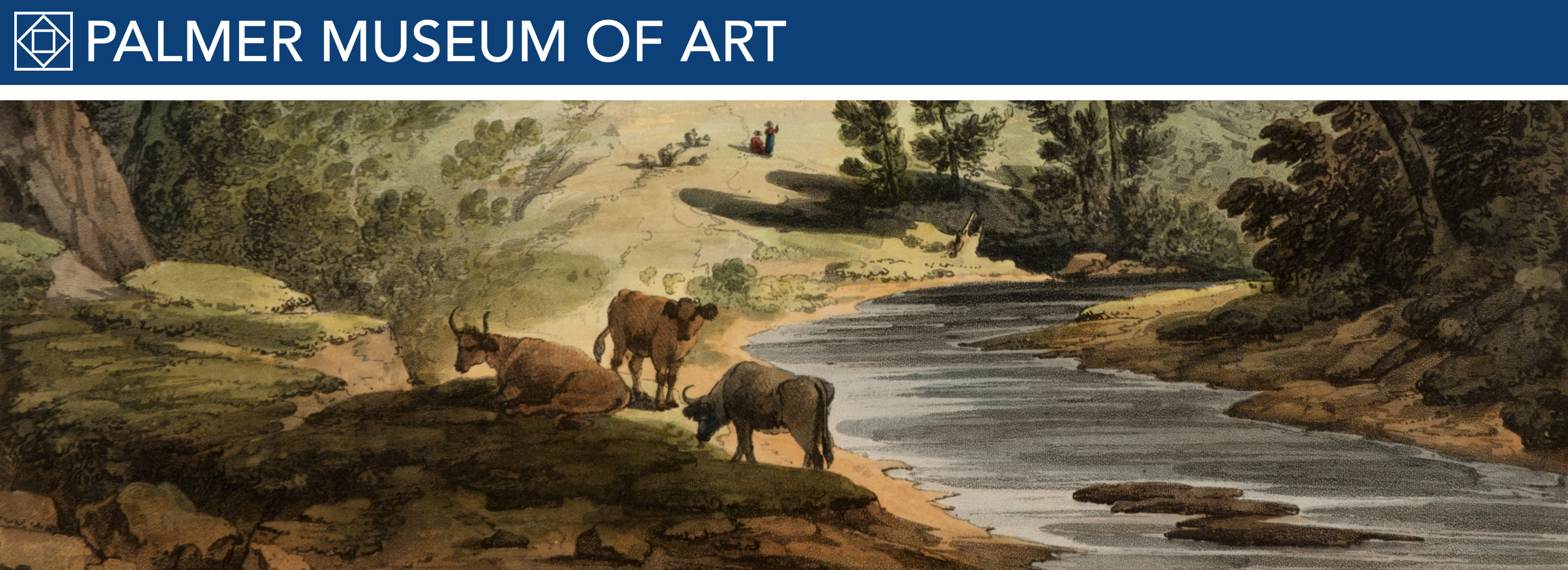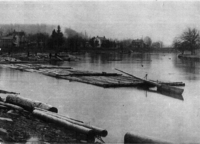Pennsylvania Scenery
Artist unknown
American, nineteenth century?
After Edwin Whitefield
American, b. England, 1816–1892
View on the Susquehanna
Color lithograph, 7 1/2 x 9 3/8 inches
From North American Scenery
Printed by E. Jones & G. W. Newman, New York
Published in 1846 by H. Long & Brother
Partial gift and purchase from John C. O’Connor and Ralph M. Yeager
86.610
The floating vehicle in the lower center of this lithograph is a spar or timber raft, constructed of white pine tree logs harvested in the broad reaches of the Susquehanna River Basin. The trees were logged in the fall—in areas as far west as Clearfield and Cameron Counties in Pennsylvania, and as far north as Broome and Chenango Counties in New York State—and prepared over the winter months for their trip downriver in the spring, when the Susquehanna’s waters rose high enough for the passage. The rafts, some as wide as twenty-nine feet and as long as two hundred feet (see image below), could take from a handful of days to several weeks, depending on water depth and the distance traveled, to negotiate the journey. The goal was Port Deposit, Maryland, near the head of the Chesapeake Bay, where the logs were grouped into even larger barges for dispatch farther down the bay or, via canals and the Delaware River, to markets in Philadelphia and New York.
In the mid-1840s, when Whitefield created the drawing for this lithograph, these rafts would have been omnipresent near Harrisburg during the high-water months. With as many as five hundred floating downriver every day, a viewer poised at the print’s vantage point could have expected to see a good deal more traffic than what is depicted here. Indeed, another version of View on the Susquehanna (image consistency from one portfolio to the next was not a hallmark of North American Scenery) depicts four rafts at various points in the river, as opposed to the single one presented here.


